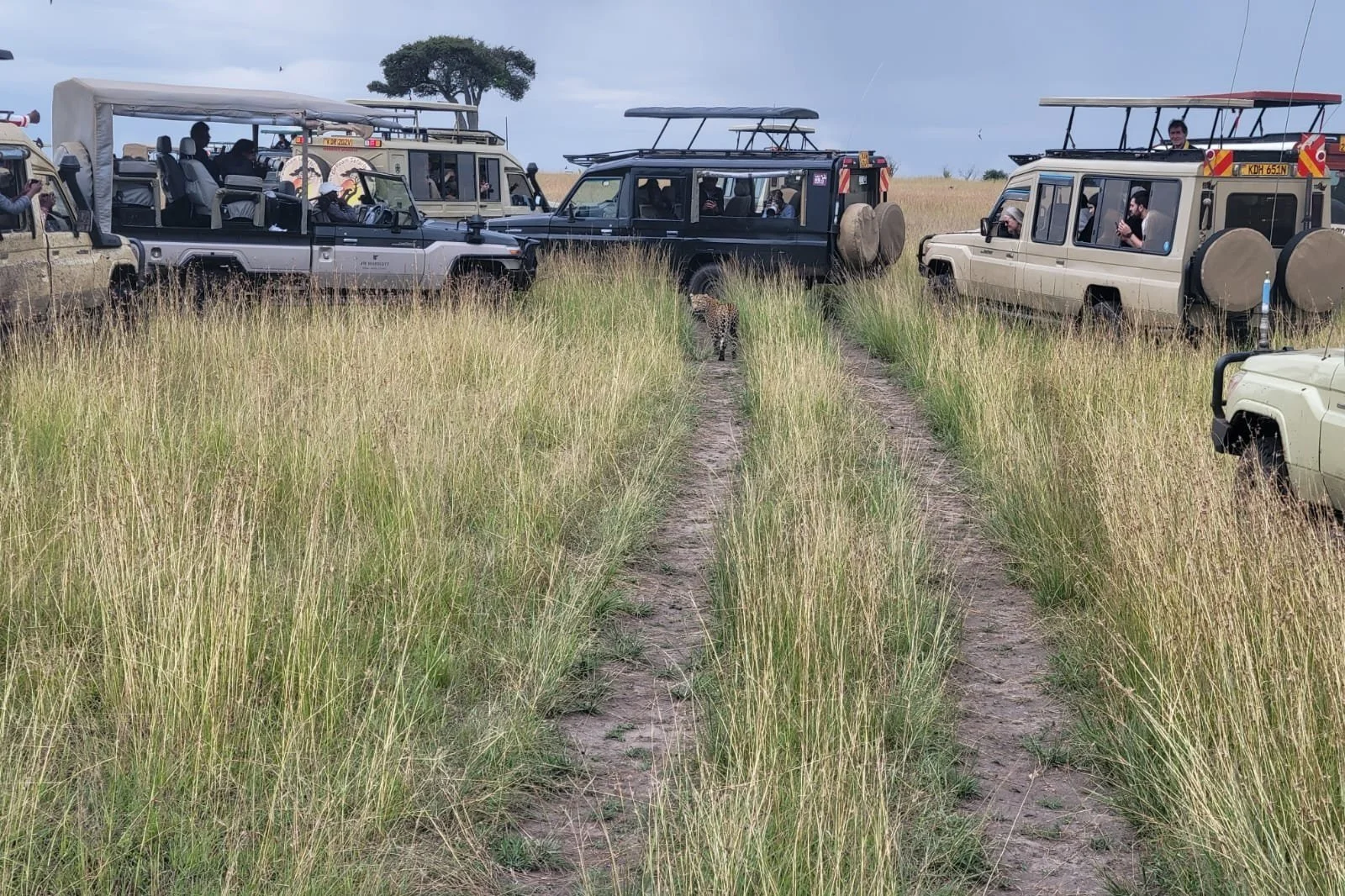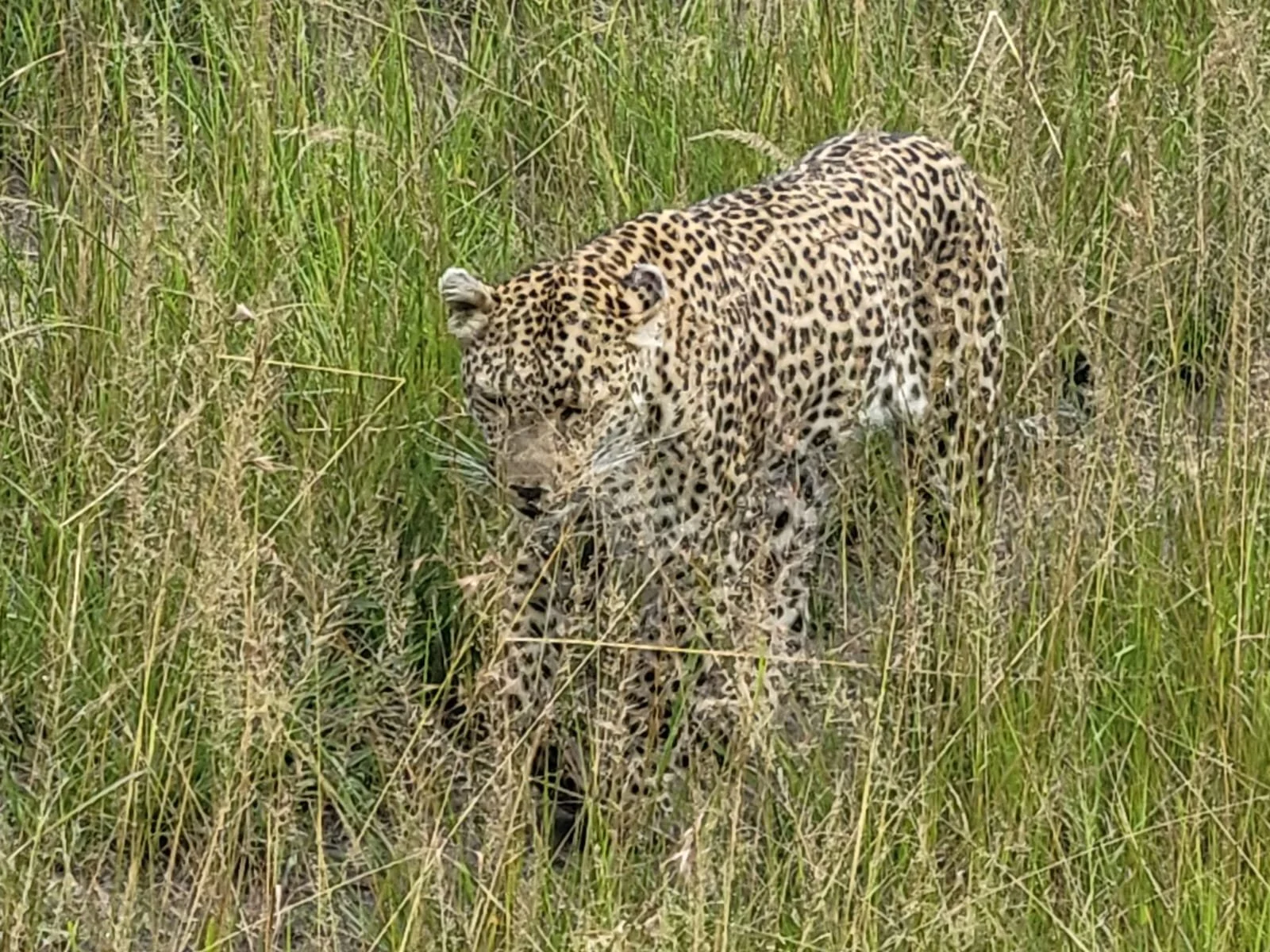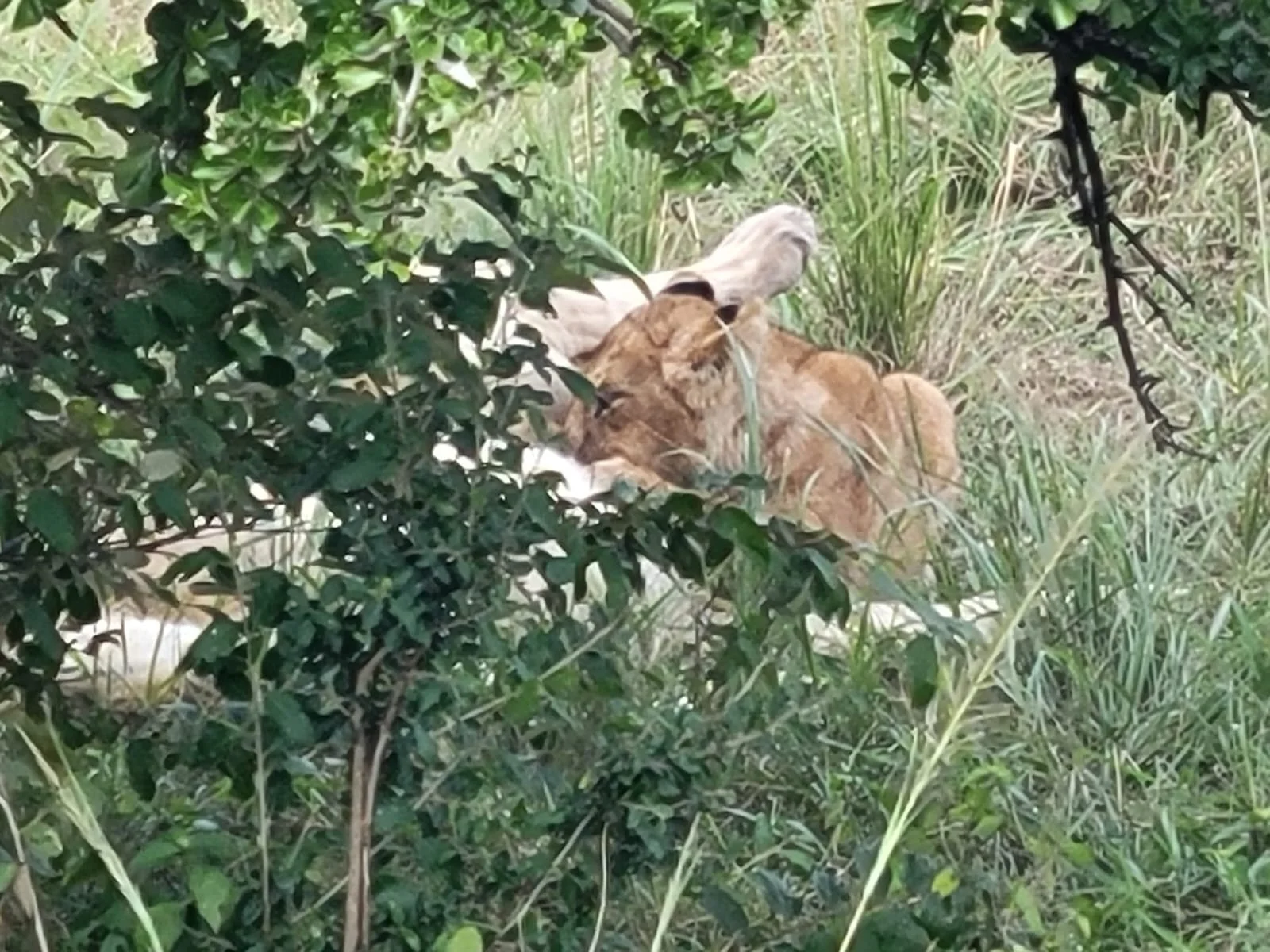Safari, part 2
To complete the report on our trip to Maasai Mara, we saw a lot of big cats. Maasai Mara is known for cats and the wildebeest migration. I’ve never been there for the migration, but we do meet up with some of the participants.
But first, the kitties. This was the first time Claudia or I had seen a leopard standing up. It was extremely popular. There were many safari trucks. Some got stuck in the mud on the way to the leopard. We had to take a much longer route to get there, due to being in a two-wheel-drive truck.
The trucks are not supposed to pen the animals in. The drivers should always leave an exit for the animal.
That really wasn’t happening with this leopard, but it didn’t bother her much. She was looking for her cubs and nothing was going to stop her. She just went under the trucks when they were in her way, such as the dark green one above and below.
The problem we were struggling with was that given all the racket and activity from the trucks, how could she hear her cubs should they call out in response to her?
Below, one of the times she walked right by us. Leopards are beautiful animals.
A better view of her face, below.
Below is a cheetah. Note the similarity in coloration. There are some differences. Leopards are shorter and stockier, by comparison. Cheetahs are long and lean.
The spots are a little different too.
The easy way to tell from their faces is the prominent “tear track” from the cheetahs’ eyes. You can see it below. Leopards don’t have that line.
“And now for something completely different.” Back to kitties later, but below is a beautiful lizard. We believe it is a gecko of some sort, but could easily be wrong. I’m definitely not a geckologist. Update: Tuko Pamoja’s staff herpetologist, Laura, informed us this is an Agama:
“That lizard is called an Agama. They are really cool little creatures, they communicate through color changes. Their heads are usually a much brighter red than that, which means it is either a juvenile (unlikely judging by its size) or it is telling another male to back off by darkening its color.”
Below are a baby and mama hippo. The baby was three days old in this picture. Probably 40 to 50 lbs.
This scene is at the Mara River, which is where the iconic videos and pictures of the wildebeest migration happen, and the crocodile attacks on the wildebeest.
The crocodiles were all over the place, as well as the hippos. They keep their distance, most of the time. The crocodiles will attack small hippos, but usually not a more fully grown one. The baby here is in danger until it can grow more. It won’t stray far from its mom until then.
The hippos will leave the river to eat each night. They will swim across from where the baby is. That swim is the danger point for the baby.
Above is a lone male hippo. Like many other species in the wild, a herd will have only one adult male. Any other males are forcibly removed from the herd. Assuming a male is either too small or too old to win the herd back, he will spend the rest of his life in exile. He may team up with other males for safety.
If a hippo is attacked by a crocodile, the herd will all jump in to defend the attacked animal. But the lone males won’t have that. On the other hand, there aren’t a lot of predators for a three-ton hippo. And hippos are notoriously dangerous in the wild.
And now for the lions. I believe our final count for the two-plus days was 27 lions. We saw 12 in one pride. It included a large male, and a number of females and cubs.
Below, in one of the cutest pictures possible, is a lion cub nursing. Note the mom’s feet on either side of the cub. He had been playing, and built up some hunger.
After the cubs finished playing and nursing, the whole pride fell asleep. Below are at least 9 lions in one picture. The cub on his back, with his leg up (left center in the picture) is the one nursing from the prior picture.
The male is at the top of the picture.
Below, another picture of just the male, from a different angle.
Below is a different male. We ran across a few prides of lions.
Below, back at the Mara River, are crocodiles. The second one is a seriously big crocodile. You can’t see all of him in the pic. The other two are smaller. I think the big one is male and the other two are female.
We have to get out of the truck and walk to see these guys, and the hippos. We are required to hire an armed ranger to accompany us, as a guide and for protection. He was telling us that the crocodile eggs aren’t automatically either male or female. It depends on the ambient temperature. Warmer temps produce males and cooler temps produce females.














